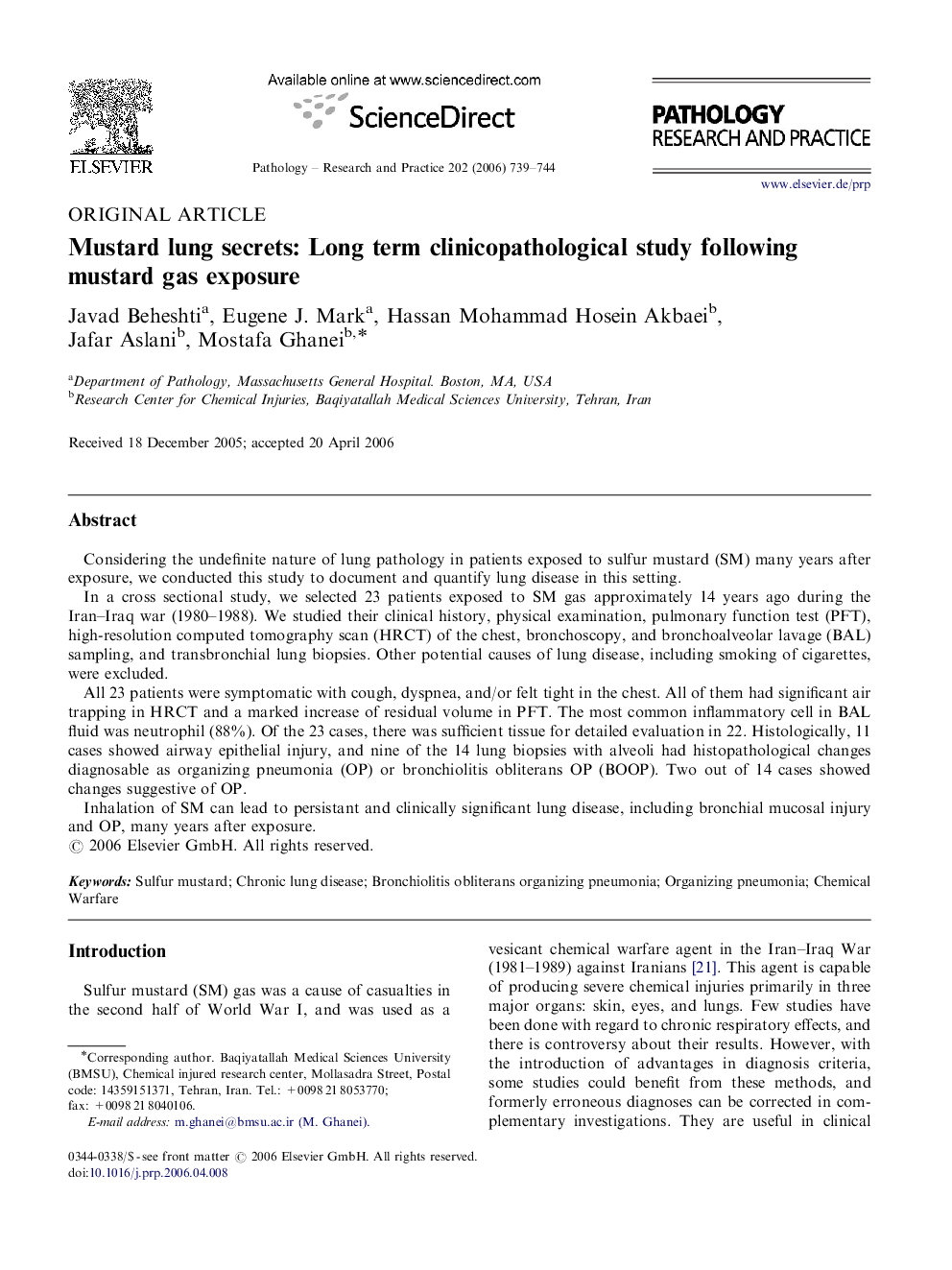| Article ID | Journal | Published Year | Pages | File Type |
|---|---|---|---|---|
| 2156542 | Pathology - Research and Practice | 2006 | 6 Pages |
Considering the undefinite nature of lung pathology in patients exposed to sulfur mustard (SM) many years after exposure, we conducted this study to document and quantify lung disease in this setting.In a cross sectional study, we selected 23 patients exposed to SM gas approximately 14 years ago during the Iran–Iraq war (1980–1988). We studied their clinical history, physical examination, pulmonary function test (PFT), high-resolution computed tomography scan (HRCT) of the chest, bronchoscopy, and bronchoalveolar lavage (BAL) sampling, and transbronchial lung biopsies. Other potential causes of lung disease, including smoking of cigarettes, were excluded.All 23 patients were symptomatic with cough, dyspnea, and/or felt tight in the chest. All of them had significant air trapping in HRCT and a marked increase of residual volume in PFT. The most common inflammatory cell in BAL fluid was neutrophil (88%). Of the 23 cases, there was sufficient tissue for detailed evaluation in 22. Histologically, 11 cases showed airway epithelial injury, and nine of the 14 lung biopsies with alveoli had histopathological changes diagnosable as organizing pneumonia (OP) or bronchiolitis obliterans OP (BOOP). Two out of 14 cases showed changes suggestive of OP.Inhalation of SM can lead to persistant and clinically significant lung disease, including bronchial mucosal injury and OP, many years after exposure.
